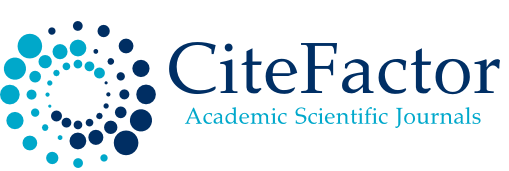Métodos químico e físico de indução í triploidia em Crassostrea gigas(Thunberg, 1793)
Palavras-chave:
temperatura, 6-dimetilaminopurina, citocalasina-B, ostraResumo
Três métodos de indução í triploidia (3N) foram testados em ostras diploides (2N) (Crassostrea gigas): dois métodos químicos, citocalasina-B (CB) e 6-dimetilaminopurina (6-DMAP), e um método físico, com choque de temperatura. O objetivo foi avaliar a tecnologia de indução í triploidia utilizando a técnica de citometria de fluxo como ferramenta para verificação dos resultados de indução. Os experimentos foram realizados em separado, sendo que a temperatura da água do mar foi mantida em 25°C em todos os tanques. No experimento I foi avaliada a eficácia da indução í triploidia com CB (0,5 mg L-1) e 6-DMAP (390 μmols L-1). No experimento II, foi testada a eficiência da indução í triploidia com CB (0,5 mg L-1) e 6-DMAP (450 μmols L-1). No experimento III, foi avaliada a eficiência da indução í triploidia com CB (0,5 mg L-1) e choque de temperatura (25 - 36°C). Nos três experimentos foram obtidas larvas triploides viáveis. Entretanto, nos experimentos I e II (com métodos químicos), observou-se elevada mortalidade das larvas, especialmente para o tratamento CB. A partir destes resultados, a substituição de CB por outros métodos de indução í triploidia é sugerida, devido ao seu elevado custo e alto nível de toxicidade para os seres humanos e para o meio ambiente
Referências
ALLEN, J.S.K.; DOWNING, S.L.; CHEW, K.K. 1989 Hatchery Manual for Producing Triploid Oysters.
University of Washington Press, Seattle, WA. 27p.
DESROSIERS, R.R.; GÉRARD, A.; PEIGNON, J.M.; NACIRI, Y.; DUFRESNE, L.; MORASSE, J.; LEDU, C.; PHELIPOT, P.; GUERRIER, P.; DUBÉ, F. 1993 A novel method to produce triploids in bivalve molluscs by the use of 6-dimethylaminopurine. Journal of Experimental Marine Biology and Ecology, 170(1): 29-43.
FAO - FISHERY AND AQUACULTURE DEPARTMENT. 2014 The state of world fisheries and aquaculture 2012. Available at: <http://www.fao.org/docrep/016/i2727e/i2727e.pdf>
GALTSOFF, P.S. 1964 The American oyster Crassostrea virginica Gmelin. United States Government Printing Office, Washington, D.C. Fishery Bulletin, 64: 480p.
GENDREAU, S. and GRIZEL, H. 1990 Induced triploidy and tetraploidy in the European flat
oyster, Ostrea edulis L. Aquaculture, 90(3-4): 229-238.
GÉRARD, A.; NACIRI, Y.; PEIGNON, J.M.; LEDU, C.; PHILEPOT, P. 1994 Optimization of triploid
induction by the use 6-DMAP for the oyster Crassostrea gigas (Thunberg, 1973). Aquaculture
and Fisheries Management, 25: 709-719.
GOSLING, E.M. and NOLAN, A. 1989 Triploidy induction by thermal shock in the Manila Clam,
Tapes semidecussatus. Aquaculture, 78 (3-4): 223-228.
GUO, X. and ALLEN, J.S.K., 1994 Reprodutive potencial and genetcs of triploid Pacific oysters,
Crassostrea gigas (Thunberg). The Biological Bulletin, 187(3): 309-318.
GUO, X. and YANG, H. 2006 Polyploid induction by heat shock-induced meiosis and mitosis
inhibition in the dwarf surfclam, Mulinia lateralis Say. Aquaculture, 252(2-4): 171-182.
GUO, X.; COOPER, K.; HERSHBERGER, W.K.; CHEW, K.K. 1992 Genetic consequences of
blocking polar body I with cytochalasin B in fertilized eggs of the Pacific oyster, Crassostrea
gigas: I. Ploidy of resultant embryos. The Biological Bulletin, 183: 381-386.
GUO, X.; DeBROSSE, G.A.; ALLEN, J.S.K. 1996 Alltriploid Pacific oysters (Crassostrea gigas
Thunberg) produced by mating tetraploids and diploids. Aquaculture, 142(3-4): 149-161.
HUBERT, S.; COGNARD, E.; HEDGECOCK, D. 2009 Centromere mapping in triploid families of the
Pacific oyster Crassostrea gigas (Thunberg, 1973).Aquaculture, 28(3-4): 172-183.
MALLIA, V.J.; THOMAS, P.C.; MUTHIAH, P. 2006 Induced triploidy in the edible oyster, Crassostrea madrasensisI by temperature shock. Journal of the Marine Biological Association of India,48(2): 249-252.
MATT, J.L. and ALLEN, S.K. 2014 Heteroploid mosaic tetraploids of Crassostrea virginica
produce normal triploid larvae and juveniles as revealed by flow cytometry. Aquaculture, 432:
336-345.
NELL, J.A.; COX, E.; SMITH, I.R.; MAGUIRE, G.B. 1994 Studies in triploid oysters in Australia: I.
The farming potential of triploid Sydney rock oysters Saccostrea commercialis (Iredale and
Roughley). Aquaculture. 126(3-4): 243-255.
NELL, J.A. 2002 Farming triploid oysters. Aquaculture,210(1-4): 69-88.
NELL, J.A.; HAND, R.E.; THOMPSON, P.A. 2004 Studies on triploid oysters in Australia XIII.
Performance of diploid and triploid Sydney rock oyster, Saccostrea glomerata (Gould, 1850),
progeny from a third generation breeding line.Aquaculture, 233(1-4): 93-107.
PIFERRER, F.; BEAUMONT, A.; FALGUIíˆRE, J.; FLAJÅ HANS, M.; HAFFRAY, P.; COLOMBO, L. 2009 Polyploid fish and shellfish: Production, biology and applications to aquaculture for performance improvement and genetic containment. Aquaculture, 29(3-4): 125-156.
QUILLET, E. and PANELAY, P.J. 1986 Triploidy induction by thermal shocks in the Japanese
oyster, Crassostrea gigas. Aquaculture, 57(1-4):271-279.
RASMUSSEN, S.R. and MORRISSEY, M.T. 2007 Biotechnology in Aquaculture: transgenics and
polyploidy. Comprehensive Reviews in Food Science and Food Safety, 06(1).
SCARPA, J.; TORO, J.E.; WADA, K.T. 1994 Direct comparison of six methods to induce triploidy in
bivalves. Aquaculture, 119(2-3): 119-133.
STANLEY, J.G.; ALLEN, J.S.K.; HIDU, H. 1981 Polyploidy induced in the American oyster,
Crassostrea virginica, with cytochalasin B. Aquaculture, 23(1-4): 1-10.
VADOPALAS, B. and DAVIS, J.P., 2004 Optimal chemical triploid induction in geoduck clams,
Panopea abrupta, by 6-dimethylaminopurine. Aquaculture, 230(1-4): 29-40.
YAMAMOTO, S. and SUGAWARA, Y., 1988 Induced triploidy in the mussel, Mytilus edulis,
by temperature shock. Aquaculture, 72(1-2): 21-29.
YAMAMOTO, S.; SUGAWARA, Y.; NOMURA, T. 1990 Chemical and thermal control of triploid
production in Pacific oysters and mussels, with regard to controlling meiotic maturation.
Advances in Invertebrate Reproduction, 5: 455-460.











